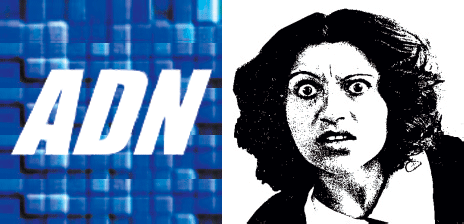(
Released via ADN Records on April 19th, 2024 is “Antigone“, Laurent Pernice‘s soundtrack to the antique Greek play by Sophocles as it was directed by Emma Gustafson and Laurent Hatat. With Pernice taking on a whole plethora of instruments including bass, double bass, zither and harp as well as what is described as ‘electronic treatments’ alongside Violaine Sultan‘s major contributions on viola the entire album caters a menu of twenty pieces rolled out over a total playtime of 53 minutes, sitting somewhere in between the sole functionality of a score and the creative approach of an artist album with ethereal, reverberating Deep Listening Music-leaning cuts like “Antigone Et Ismene (Prologue)” followed by the Classical-informed elegiac nocturnal beauty of “Theme d’Antigone + Son Reflet Dans L’Ombre” whereas pieces like “La Colere De Creon” explore slow moving droning string harmonics, “Ismena A Thebes” even touches base with what was once defined as PopAmbient by the crew of Cologne’s Kompakt record store, despite being presented here in a fashion which naturally gravitates more towards the Classical / (Neo)Classical side of the musical spectrum. Furthermore “La Lutte” takes on a more dramatic, brooding and somewhat Industrial inspired form, “Stasimon 1” even introduces Spoken Word atop brittle and icey electronic textures whereas the earth-shaking tonality of “La Decision d’Un Homme” seems to directly emerge from humungous subsurface vaults and so do the DarkAmbient-informed soundwaves of “A Bord De L’Acheron + L’Arrive Du Garde” whereas “Une Fine Poussiere Le Recouvrait“, as well as the cascading closing cut “Antigone Au Tombeau“, even seems to dabble with rural and folksy atmospheres just to name a few. Quite an interesting and diverse journey, this.



